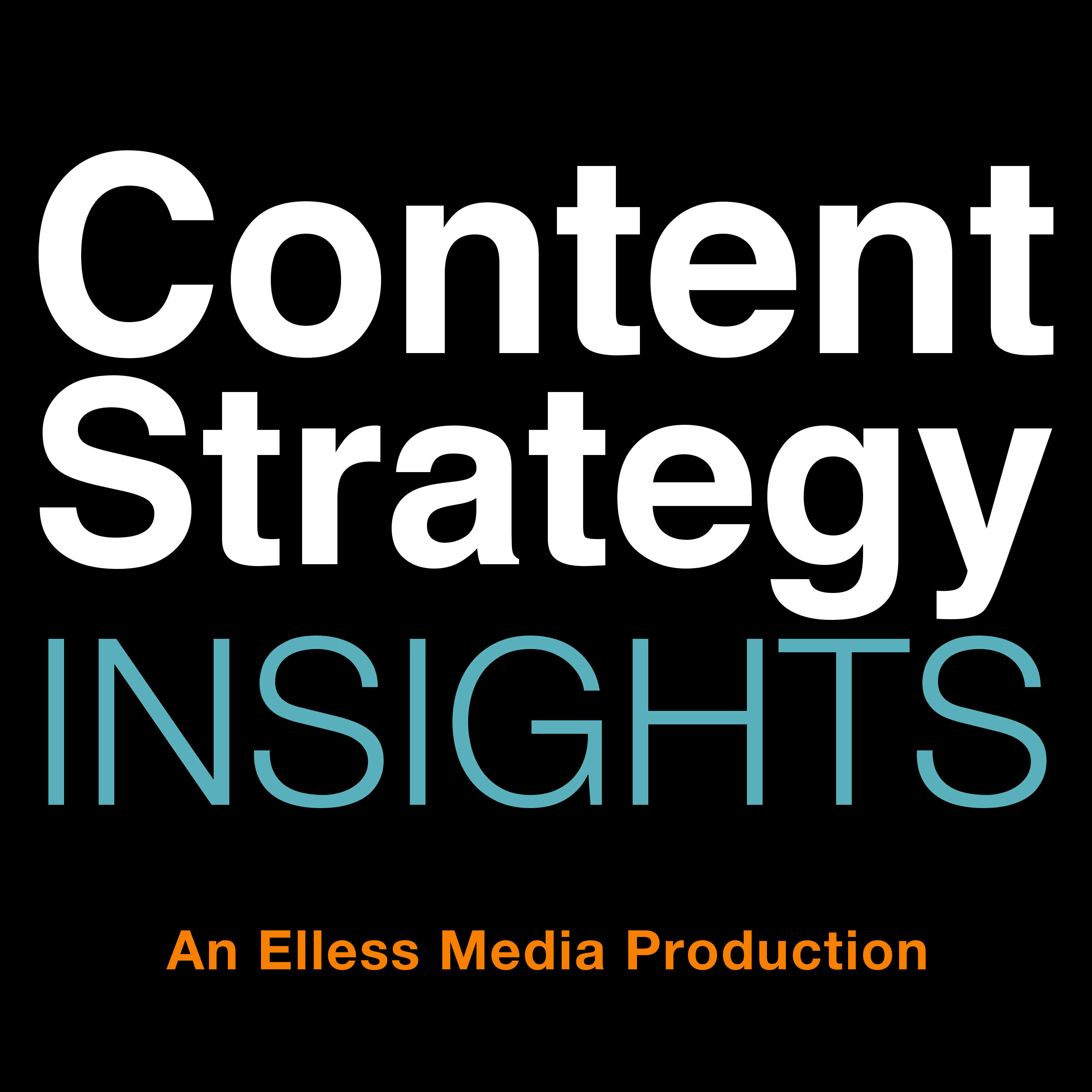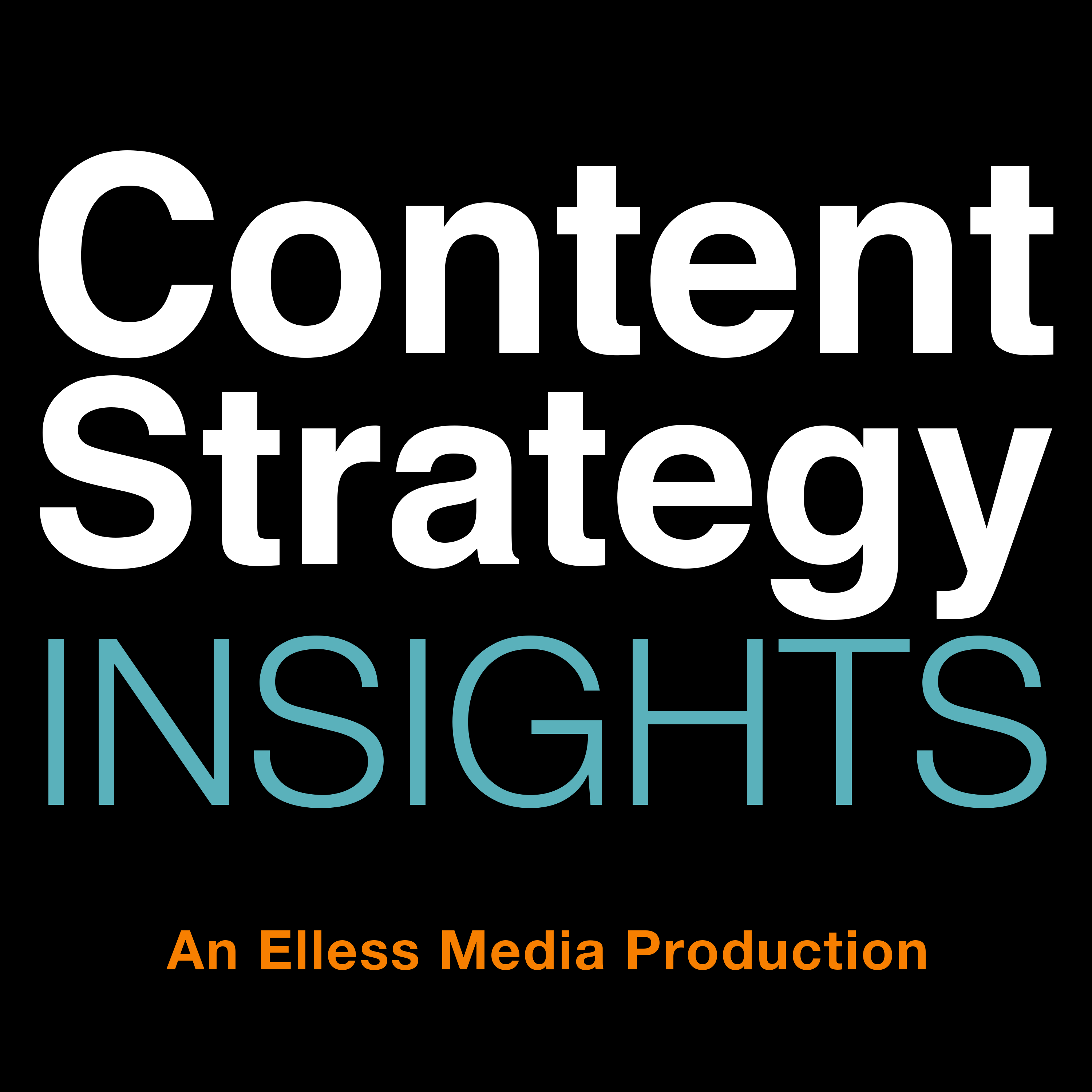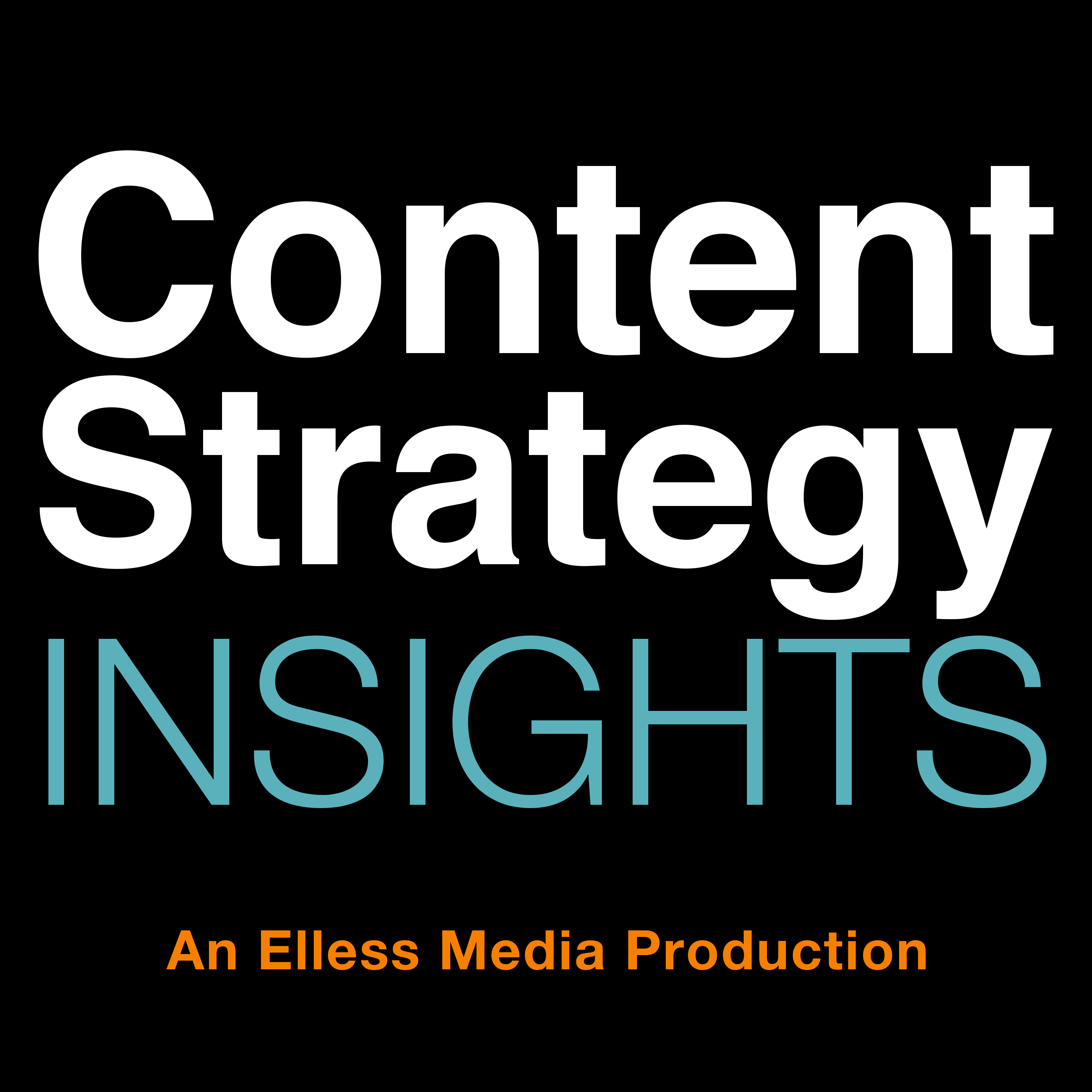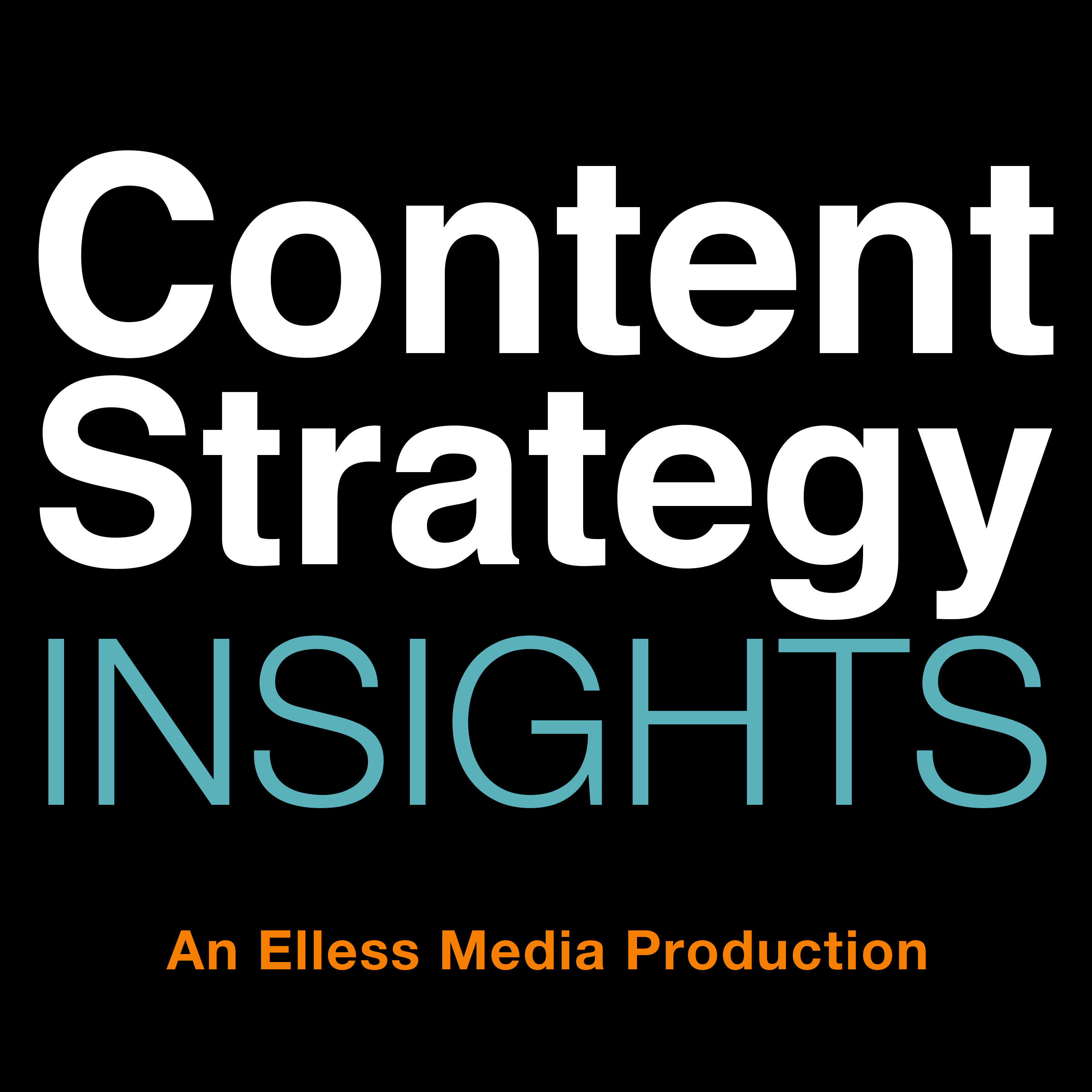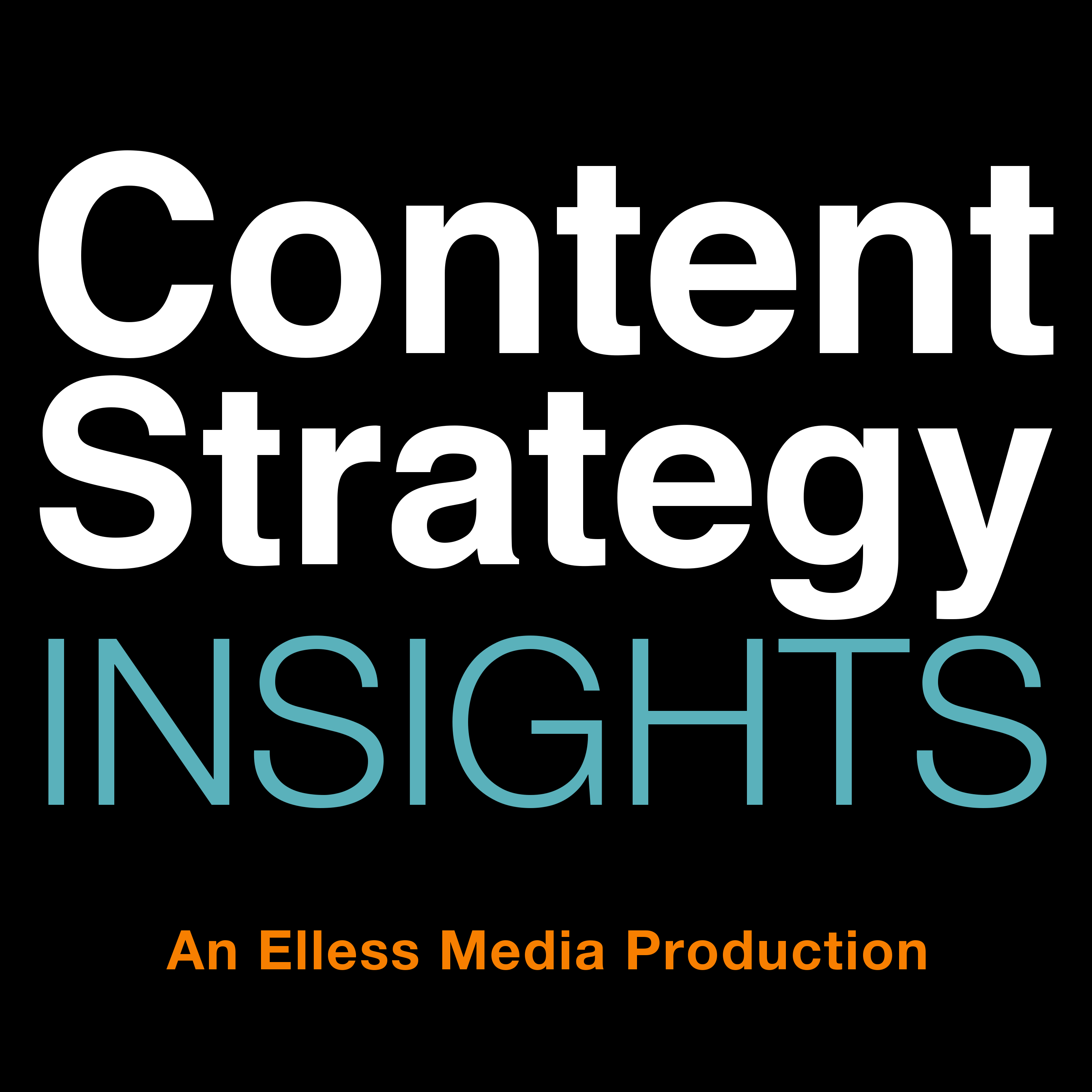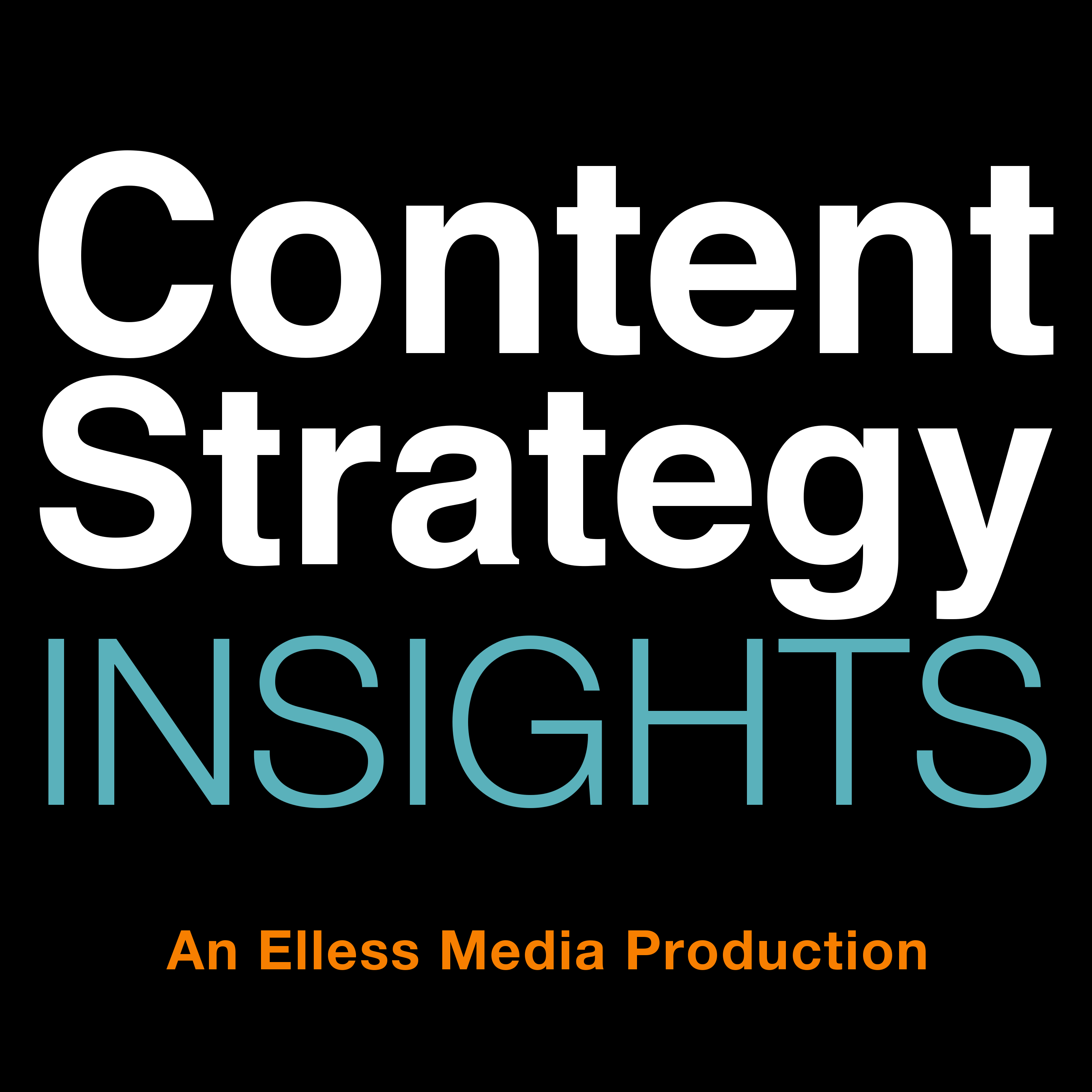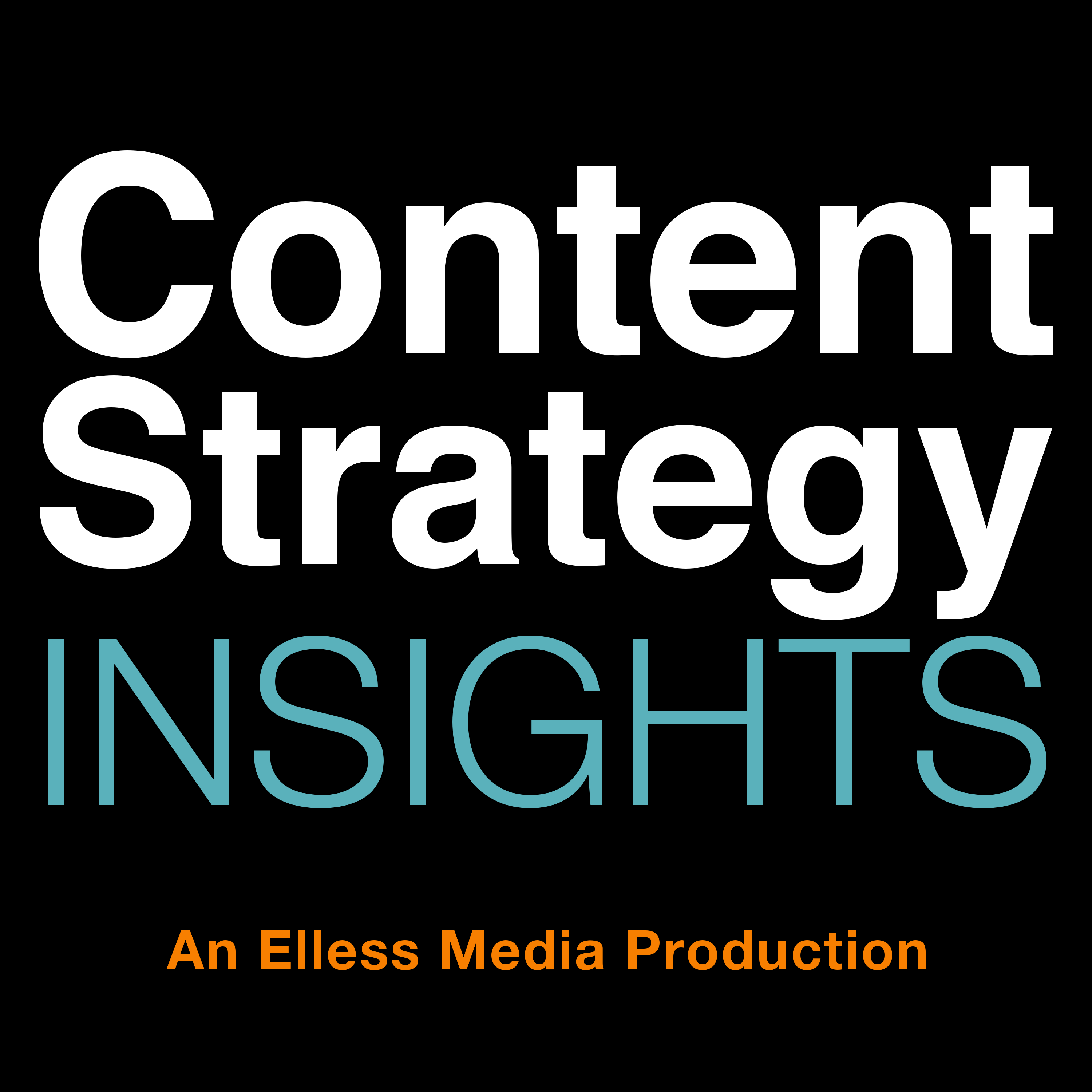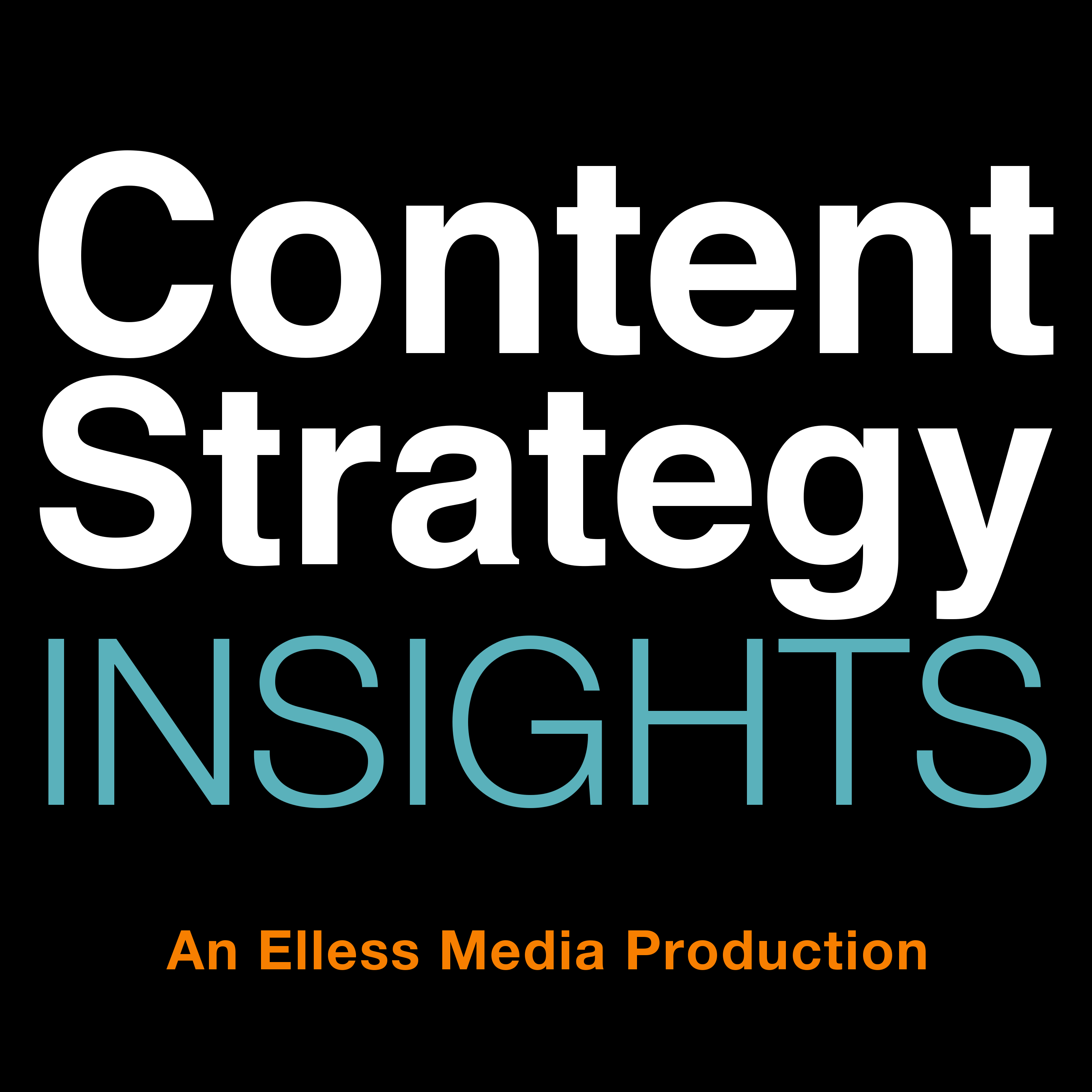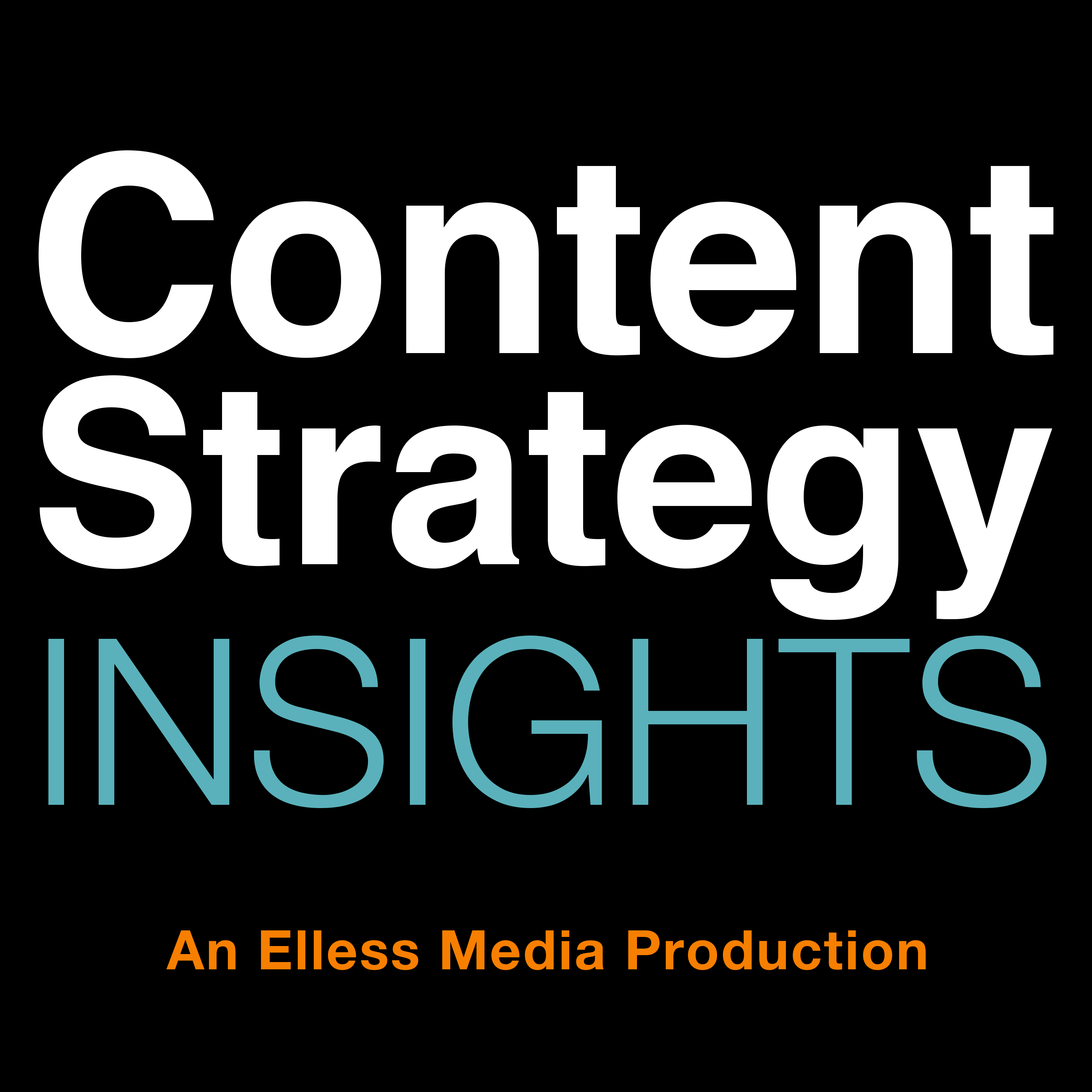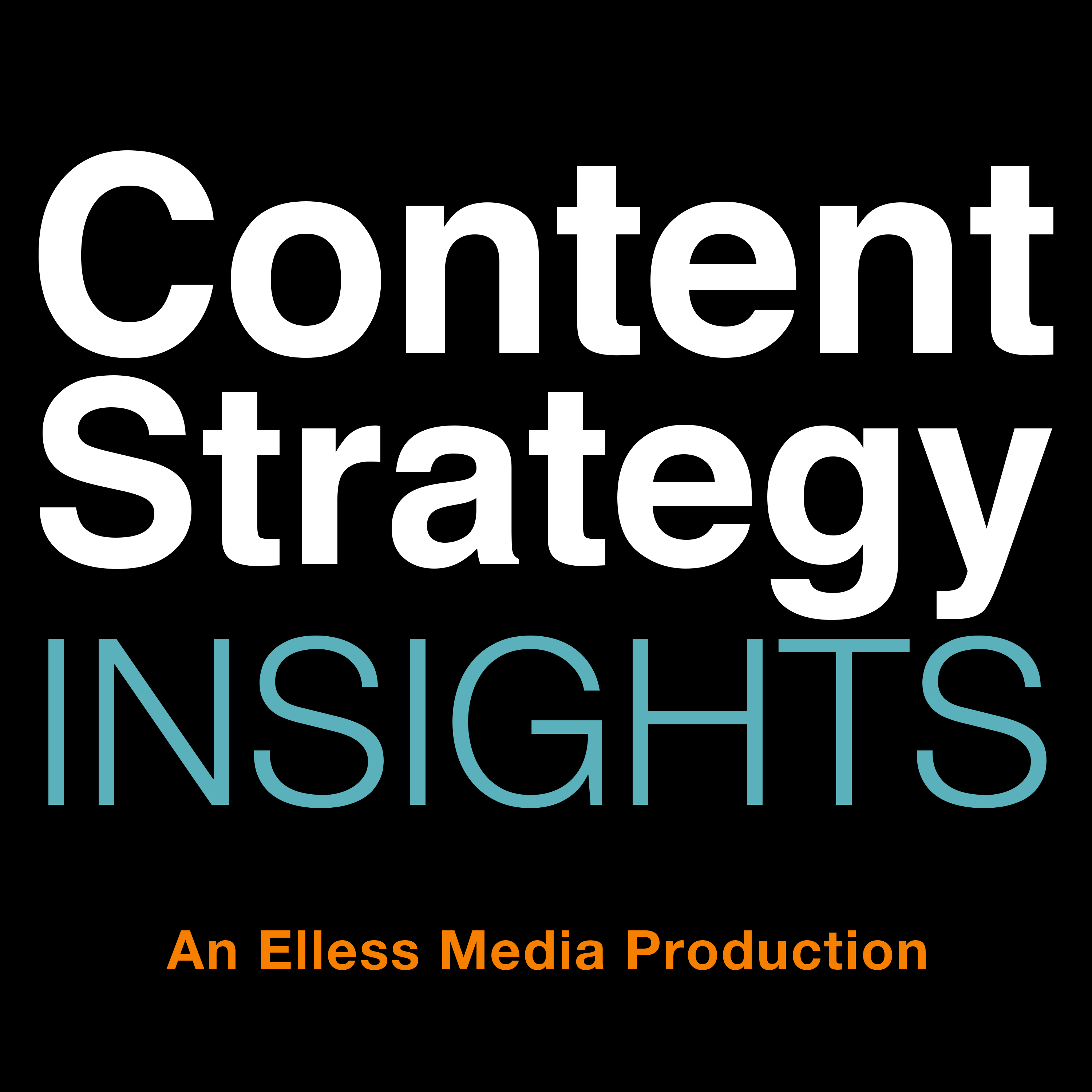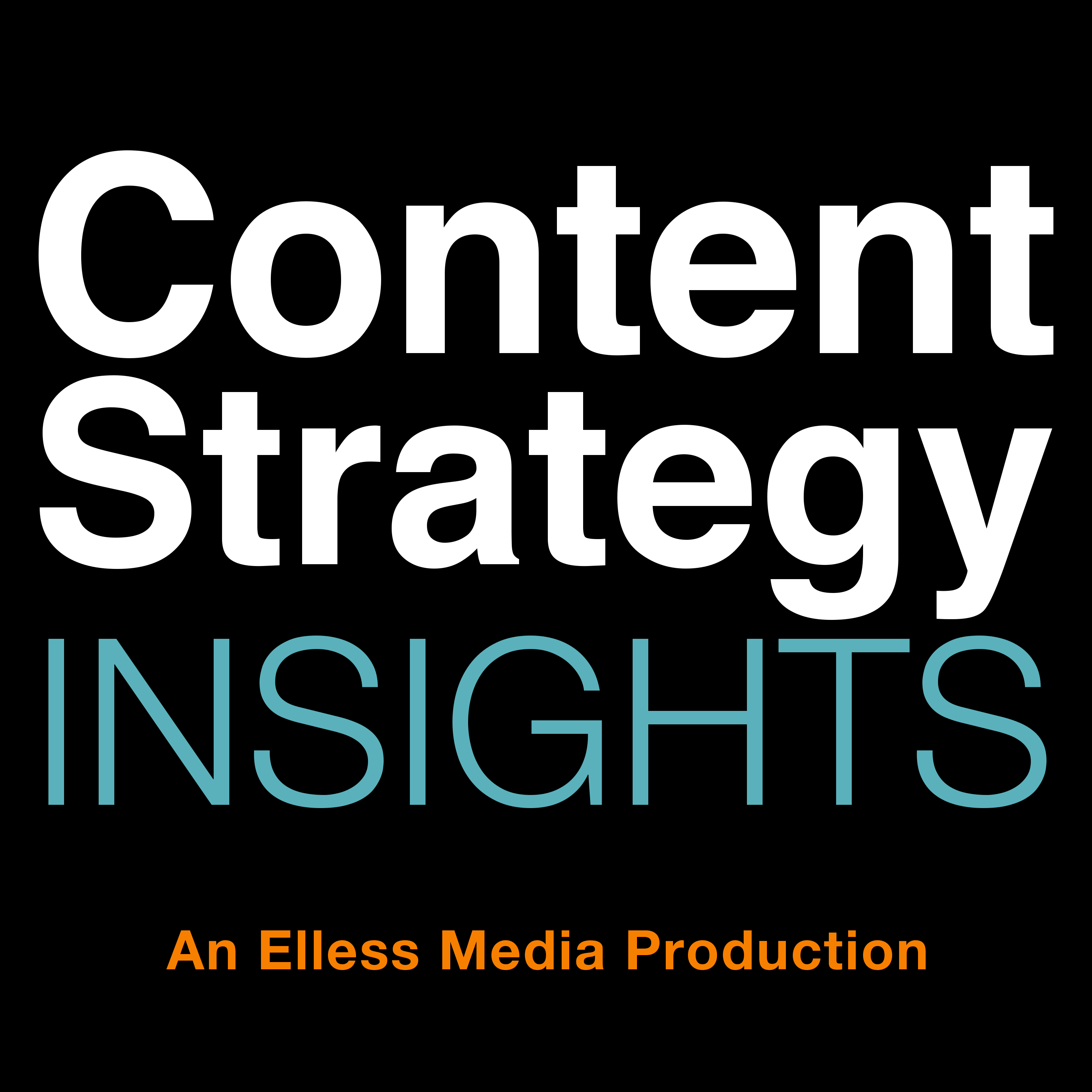Discover Content Strategy Insights
Content Strategy Insights

Content Strategy Insights
Author: Larry Swanson
Subscribed: 13Played: 170Subscribe
Share
© Copyright 2017-24 Larry Swanson & Elless Media
Description
Conversations with content strategists from all crafts (strategy, design, engineering, operations, etc.) and backgrounds (enterprise, agencies, UX, content design, technical communication, marketing, SEO, publishing, journalism, etc.).
215 Episodes
Reverse
Artificial intelligence is driving a wave of change in content strategy practice. AI is here now and will soon touch virtually every aspect of content work, from ideation and creation to management and analytics. Jeff Coyle can help you understand and navigate how these new AI-driven practices will affect your content career. https://ellessmedia.com/csi/jeff-coyle/
Technical documentation of software products is critical work that needs to accurately inform end users, regardless of how quickly and substantially the software might be changing. Manny Silva has created Docs as Tests, a system that integrates a set of well-developed practices and a collection of engineering tooling, to help technical communicators streamline and constantly improve their software documentation work. https://ellessmedia.com/csi/manny-silva/
Modern content systems are complex and abstract, presenting problems for managers who want to understand how their content is performing. At Autogram, Jeff Eaton and Karen McGrane have developed a content observability framework to address this complexity. Their framework evaluates the composition, quality, health, and effectiveness of content programs to help enterprises measure the return on their content investment. https://ellessmedia.com/csi/jeff-eaton-2/
Aligning and orchestrating product content for complex business use cases is much easier when you have a framework to structure and guide your efforts. Jeffrey A. "jam" McGuire and his business partner developed the "value map" framework to structure and organize product marketing information. This helps them to align internal stakeholders on strategy and messaging and to efficiently deliver the right content to both business and technical users of the product. https://ellessmedia.com/csi/jam/
Experience design for readers of online content gets a lot of attention. The authors who create the content and get it ready for publication aren't as well served. In his new book, Designing Content Authoring Experiences, Greg Dunlap addresses this situation, showing content-system creators how to design better interfaces, streamline workflows, and otherwise improve the lives of content authors and managers. https://ellessmedia.com/csi/greg-dunlap-2/
Sarah Johnson asks, "If a digital experience is a conversation with a user, how can you have that conversation if you don't know what the words are?" Sarah addresses the crucial role of content in her new book, "Content-first Design," tackling both the pragmatic aspects of a content-first approach to design as well as how to advocate for content practice. https://ellessmedia.com/csi/sarah-johnson/
Both UX and content professionals routinely find themselves on teams where they are the sole practitioner of their craft. Leah Buley and Joe Natoli recently revised "The UX Team of One" to share their pragmatic take on solo UX practice, deftly balancing the application of human-centered research insights with the need to show the business value of UX work. https://ellessmedia.com/csi/ux-team-of-one/
A truly customer-focused content strategy is the cornerstone of good customer experiences. Over the past 25 years, Rob Punselie has developed and honed content discovery research methods based on time-tested usability knowledge and the Jobs to Be Done product-development framework. This approach has helped him consistently deliver to his clients effective and durable content and customer experience strategies. https://ellessmedia.com/csi/rob-punselie/
Storytelling is the oldest content practice. Alan Porter helps enterprises and content practitioners improve their story craft. Alan shows how better stories both convey the unique benefits of a business to their customers and improve cross-functional communication within organizations. https://ellessmedia.com/csi/alan-porter/
As recently as 40 years ago, we didn't have much need for the word "content." But as soon as we started delivering the same information via multiple channels, we needed a way to identify the essential elements of content assemblies and to work with them independent of their various manifestations in information products. So the concept of "content" was born. Joe Gollner has worked with content from its earliest days and has crafted a multi-layered definition to account for its many aspects. https://ellessmedia.com/csi/joe-gollner/
Localizing digital product content is challenging on its own. When you add the need to communicate about sensitive financial topics to very specific audiences, the complexity of the work quickly grows. Stephanie Pereira is a content design manager working on the Google Payments product. She deftly balances a range of internal compliance and design concerns with the very specific hyper-localization needs of her audience. (We had an internet connection issue around 28:00 - apologies for the break in continuity.) https://ellessmedia.com/csi/stephanie-pereira/
Over the past ten years, Chris Bach has been at the forefront of the transformation of web development. Chris coined the term "Jamstack," which refers to one of the first conceptions of a composable web architecture (the acronym JAM accounts for the JavaScript, APIs, and markdown that make up a simple decoupled web system). He also founded Netlify, a company that supports these new architectures and which now serves tens of millions of customers. https://ellessmedia.com/csi/chris-bach/
There is always more taxonomy work to be done than there are practitioners to do it. Fran Alexander's solution to this imbalance is to democratize taxonomy practice. Fran's work actually spans the full range of semantic practices, from simple term lists to taxonomies, thesauruses, and ontologies and knowledge graphs. Wherever she's working in this span of activities, she's always happy to bring other practitioners along with her. https://ellessmedia.com/csi/fran-alexander/
Where web accessibility, digital sustainability, content management, open-source software, and web standards intersect, you'll find Mike Gifford. Mike is the open standards and practices lead at Civic Actions, a company that helps governments deliver better digital services. Through his practice, Mike ensures that the content systems they deliver are built as sustainably as possible, deliver accessible experiences to citizens, and work well for authors and others who use the system. https://ellessmedia.com/csi/mike-gifford/
Through her taxonomy and other information architecture work, Michele Ann Jenkins helps people across the organizations she works with align their mental models and terminology usage. This alignment of concerns and language forms the foundation of the semantic architecture that is so crucial to modern content systems. https://ellessmedia.com/csi/michele-ann-jenkins/
Modern content projects get the best results when content strategy and conceptual meaning are considered together, and the results can really shine when long-time collaborators do the work. Ilse Jonker and Joyce van Aalten are independent consultants who have teamed up on many content projects over the past dozen years. Ilse focuses on content strategy and structure, and Joyce focuses on taxonomy and semantics. Together they build the scaffolding the supports their clients' content operations. https://ellessmedia.com/csi/ilse-and-joyce/
Vinish Garg takes a holistic and pragmatic view of the role of content and other crafts in digital product design, using an approach he calls "product sense." Content strategy and design are just two of many practices that contribute to the success of any digital product. All digital practitioners justifiably take pride in their individual crafts, but Vinish encourages content, design, and other practitioners to favor product utility over their individual crafts. https://ellessmedia.com/csi/vinish-garg/
The CMS landscape has evolved a lot over the past couple of decades. Recently, headless CMSs and decoupled content architectures have appeared to address the need for omnichannel content experiences. While their separation of the management of content from its presentation offers many benefits, these systems have left many users dissatisfied and disillusioned. Preston So argues that the solution to this situation is universal CMS. https://ellessmedia.com/csi/preston-so-3/
A crucial skill for any content practitioner is the ability to sort out complex work environments and thrive within them. David Connis shows how a systems thinking mindset can help you cope with the upheaval of AI, the messy realities of content work, and other complex design challenges. He teaches a course on systems thinking for content designers but shows how any content or design practitioner can benefit from a systematic approach to their work. https://ellessmedia.com/csi/david-connis/
When the concept of "content" comes up it can be hard to get everyone aligned on exactly what you're talking about. At IKEA, Timi Stoop-Alcala focuses on the "what" of content via the practice of knowledge domain modeling both to deal with the complexity of content and to highlight its importance. Her knowledge-focused, human-centered approach has also elevated the role of content in the organization so that content is now recognized as a core competency. https://ellessmedia.com/csi/timi-stoop-alcala/



